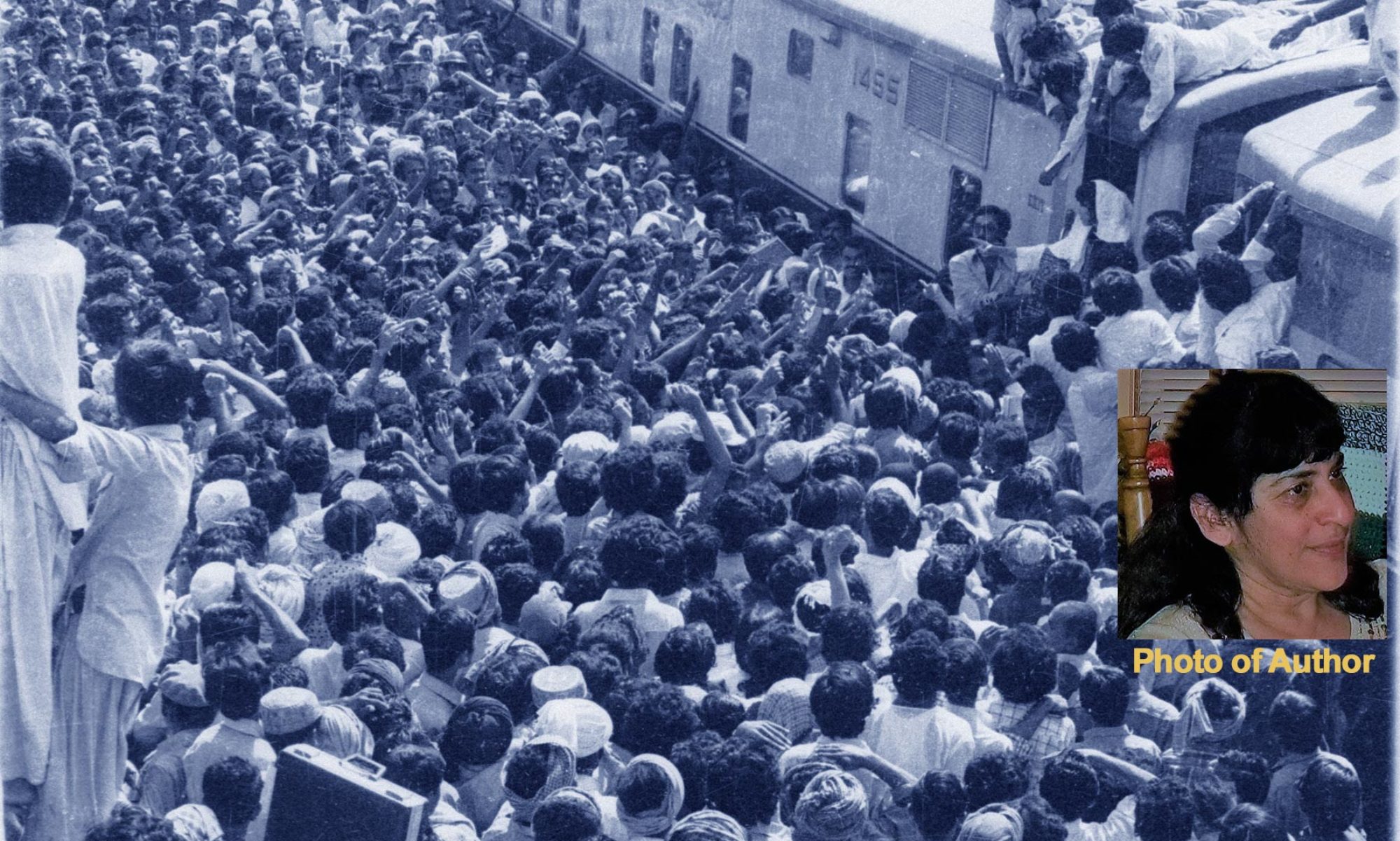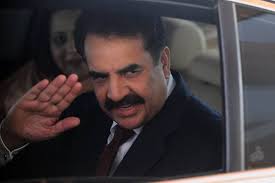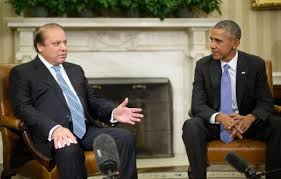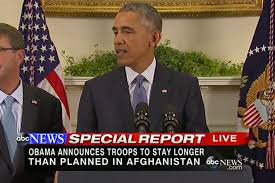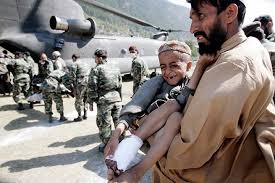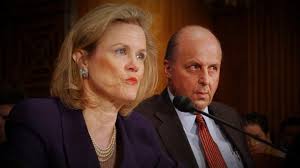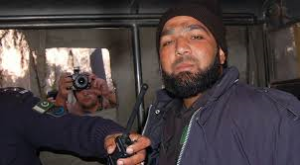KABUL, Oct 26 — A massive earthquake rocked northeastern Afghanistan on Monday with devastating tremors rippling across the region, leaving more than 145 dead amid collapsed buildings, panicked stampedes and fears of landslides. Officials braced for even more casualties.
The full extent of damage and human toll was not immediately clear as rescue teams tried to assess areas hardest hit by the quake, which had a preliminary magnitude of 7.5 and was centered in a remote area of the Hindu Kush mountains.
Among the victims were 12 students at a girls’ school in northern Afghanistan who died in a frantic dash from shaking buildings.
“They were not killed by the collapse of the wall or rooms, but died trying to get out under the feet of the others,” said Mohammad Dawood Agha, a senior police official in the Takhar province.
The bulk of the deaths appeared to be in Pakistan, where the army said at least 123 people perished and more than 950 were hurt. Afghanistan officials placed the death tally at about 23 several hours after the temblor.
But the collapse of phone lines and cell phone networks prevented officials from getting details from remote areas under the shadows of summits reaching more than 20,000 feet. Previous major quakes in the region have caused extensive deaths or injuries. The worries include landslides on slopes soaked by recent rains.
“Initial reports, unfortunately, speak of high material and human losses” in northern province and the capital, Kabul, said Afghanistan Chief Executive Abdullah Abdullah, whose position is equivalent to prime minister in the power-sharing government.
In Pakistan’s scenic northern Gilgit-Baltisan area, there were concerns of widespread damage. Residents reported numerous landslides and avalanches during the quake. One man photographed a huge chunk of rock and ice crashing down into the Hunza Valley, which is surrounded on all sides by snow-capped mountains.
TheU.S. Geographical Survey , which monitors earthquake patterns, put the quake’s preliminary magnitude at 7.5 and placed its epicenter in the mountains of Badakhshan Province, about 160 miles northeast of Kabul near the Afghan-Pakistan border. The area, known as Jurm, is believed to be relatively sparsely populated. It’s also a district where the Taliban have a big presence and has engaged in battles with Afghan security forces this year.
“Yes, the Taliban have presence in Jurm,” said Badakhshan’s governor, Shah Waliullah Adeeb. “But I do not think they will deter any emergency work or rescue operation.”
Death toll mounts after Afghanistan earthquake
A massive earthquake in northeastern Afghanistan caused causalities across the southeast Asian region. Reports of injuries and deaths in Pakistan, India and Afghanistan are mounting in the aftermath of the 7.5-magnitude quake. (Reuters)
Adeeb said more than 1,400 houses have been partially destroyed in his province, including 70 in one village.
“One of the scariest experiences,” tweeted Bilal Sarwary, a freelance Afghan journalist. “Was stuck inside a building during this massive earthquake.”
Afghanistan has long been prone to earthquakes. The last major one struck the nation in March 2002 in Baghlan Province in the north, where more than 1,500 people died. In remote mountainous areas, such has Badakhshan, most Afghans live in mud houses that easily crumble during large quakes. Landslides are also quite common, and in recent weeks there has been much rainfall in the region, exacerbating the impact of an earthquake.
In a statement, Pakistan’s army chief, Gen. Raheel Sharif, said he had ordered the country’s armed forces to start carrying out rescue operations “without caring or waiting for orders.”
In Islamabad, the earthquake was felt in two sharp, back-to-back jolts that lasted for about 30 seconds each. There were no immediate reports of damage in the Pakistani capital, but terrified residents ran out in the streets when the shaking began.
“The first shock was mild, but then came the big one, and I screamed, ‘God, Help us.’ I thought it was the end of everything. The house was shaking, the trees and even the earth were shaking,” said Zafar Iqbal, who was working as a supervisor at a local restaurant. “I am still terrified.”
Arifullah, a teacher in Islamabad, said he immediately had a flashback to the 7.6 magnitude earthquake that hit northern Pakistan in 2005. That earthquake killed 70,000 to 80,000 people.
“We ran outside, and the students ran, too, and turned pale with fear,” said Arifullah, who has only one name. “We kept reciting the verses of the Holy Koran and asked for God’s help and his forgiveness . . . I heard a loud sound, and then all the earth was shaking.”
The U.S. Geological Survey said seven other quakes of magnitude 7 or greater have occurred within 150 miles of Monday’s epicenter, the most recent in March 2002 just 12 miles west of the latest quake zone. More than 150 people died in the 2002 quake.
One factor that could limit the damage was the relative depth of Tuesday’s quake — estimated at about 125 miles below the surface — that may lessen ground shaking, the U.S. Geological Survey said.
In northern India, tremors were felt throughout the region — most severely in the northern state of Jammu and Kashmir, where widespread power and telephone outages were reported. The national capital region temporarily suspended Metro service in New Delhi as a precaution in the quake’s aftermath.
“I pray for everyone’s safety,” Indian Prime Minister Narendra Modi wrote in a Twitter message.
“I have asked for an urgent assessment and we stand ready for assistance where required, including Afghanistan & Pakistan,” Modi said in his second tweet. The Indian military had responded in force after the Nepal earthquake earlier this year, assisting with helicopter rescue missions and providing humanitarian aid.
In April, a magnitude 7.8 earthquake in Nepal claimed more than 9,000 lives and left some mountain villages cut off from aid for days.
Sayed Salahuddin and Mohammad Sharif in Kabul, Annie Gowen in New Delhi and Brian Murphy in Washington contributed to this report.
